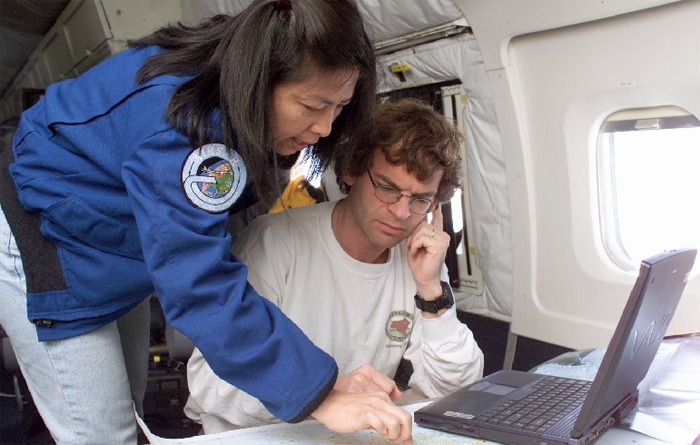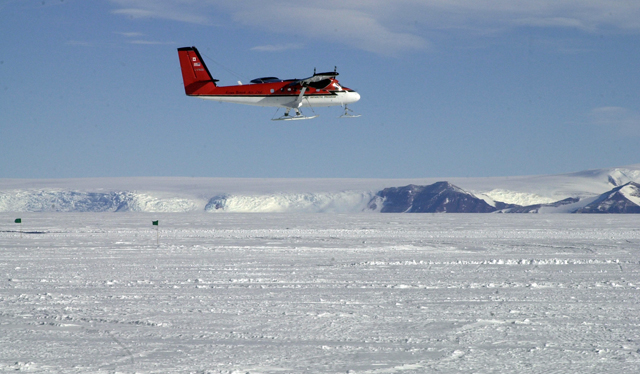|
Going airborneAerial survey will measure thickness of East Antarctic glaciersPosted October 3, 2008
Scientists interested in modeling responses of glaciers and ice sheets to help predict future sea level rise most often focus on Greenland and West Antarctica. That’s where the action is in terms of glacial discharge and warming temperatures — at least for now. Eric Rignot, a professor of Earth System Science at the University of California-Irvine But during this same field season, he will also turn his attention to the vast East Antarctic ice sheet and its massive glaciers in a separate project supported by NASA’s Cryosphere Science Program In particular, Rignot will lead a two-week airborne expedition to measure the thickness of a series of glaciers near the French research station Dumont d’Urville. “This is an important region of East Antarctica, because it’s similar to West Antarctica,” Rignot explained. “A lot of these glaciers are grounded below sea level, in contrast to the rest of East Antarctica.” That means the glaciers are more likely to respond to climate change, in particular a change in the temperature of the surrounding ocean, a key component many scientists now believe is speeding up glacier retreat and even ice shelf collapse. Using a radar system developed by JPL and the University of Iowa, the team will fly in a ski-equipped Twin Otter over glaciers near the French station. The area was featured in the popular documentary, March of the Penguins. The radar operates at lower frequencies than other systems, which Rignot said should work better in areas with a lot of surface roughness typical of the outlet glaciers in the region. He said the glaciers appear to be thinning based on satellite observations, but not significantly at this time, so it’s important to collect baseline information about their thickness and other characteristics. “I’ve been looking at these glaciers for quite a while and trying to see if I can detect any speedup, but they’re not speeding up. They’re just flowing slightly too fast,” he explained. “It is an interesting and important part of East Antarctica. There’s been a lot of attention paid to West Antarctica, but we shouldn’t forget that there are important changes going on in East Antarctica that should be eye openers,” he added. The region’s glaciers, Rignot explained, could drain more ice than West Antarctica if the Cook Ice Shelf and the Totten Glacier and others collapsed, similar to what happened to glacier flow when the Antarctic Peninsula’s Larsen B Ice Shelf disintegrated earlier this decade. Glaciers that flowed into Larsen B picked up speed by three to eight times. Rignot estimates that the East Antarctic glaciers just along the coast near Dumont d’Urville could raise sea level by 10 meters. The project plan is to arrive at the U.S. Antarctic Program’s McMurdo Station “Our French partners are looking forward to international cooperation in the context of [the International Polar Year NASA-supported research in this story, with field coordination provided by NSF: Eric Rignot, UCI and NASA’s Jet Propulsion Laboratory. |



For USAP Participants |
For The Public |
For Researchers and EducatorsContact UsNational Science FoundationOffice of Polar Programs Geosciences Directorate 2415 Eisenhower Avenue, Suite W7100 Alexandria, VA 22314 Sign up for the NSF Office of Polar Programs newsletter and events. Feedback Form |



